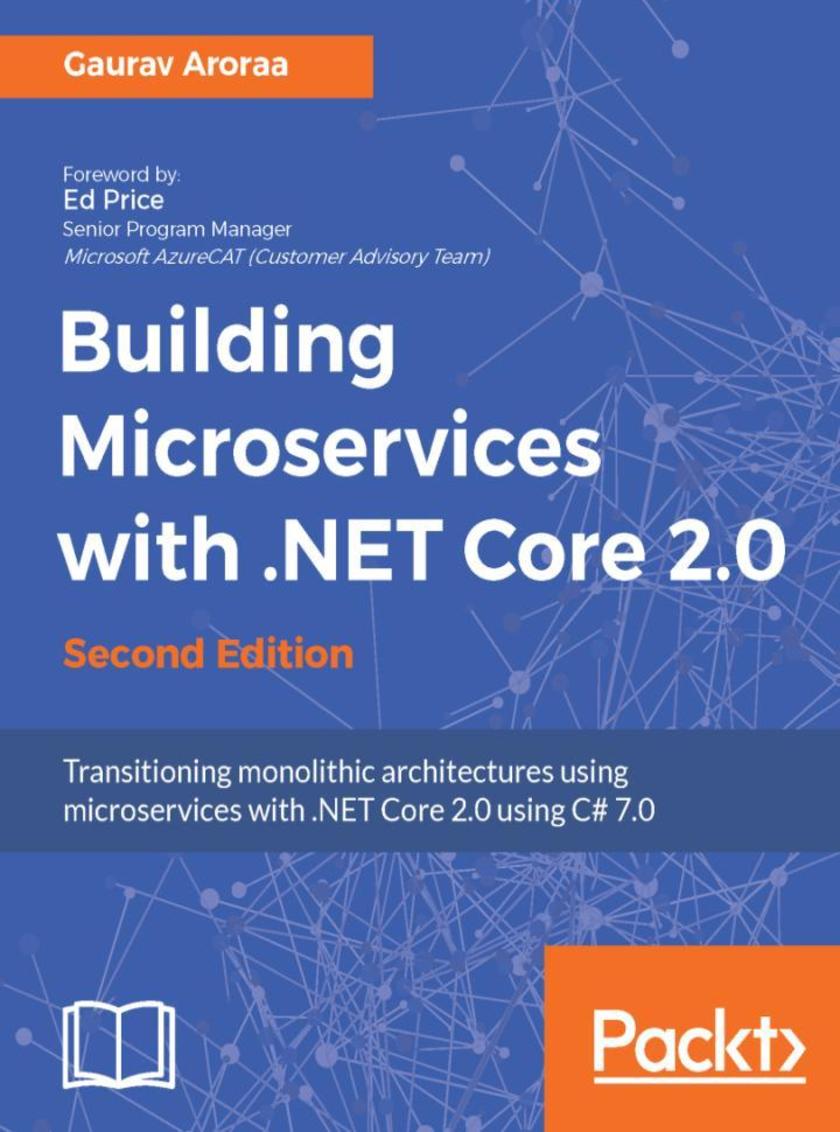
Building Microservices with .NET Core 2.0 - Second Edition
¥80.65
Architect your .NET applications by breaking them into really small pieces - microservices -using this practical, example-based guide. About This Book ? Start your microservices journey and get a broader perspective on microservices development using C# 7.0 with .NET Core 2.0 ? Build, deploy, and test microservices using ASP.Net Core, ASP.NET Core API, and Microsoft Azure Cloud ? Get the basics of reactive microservices Who This Book Is For This book is for .NET Core developers who want to learn and understand the microservices architecture and implement it in their .NET Core applications. It’s ideal for developers who are completely new to microservices or just have a theoretical understanding of this architectural approach and want to gain a practical perspective in order to better manage application complexities. What You Will Learn ? Get acquainted with Microsoft Azure Service Fabric ? Compare microservices with monolithic applications and SOA ? Learn Docker and Azure API management ? Define a service interface and implement APIs using ASP.NET Core 2.0 ? Integrate services using a synchronous approach via RESTful APIs with ASP.NET Core 2.0 ? Implement microservices security using Azure Active Directory, OpenID Connect, and OAuth 2.0 ? Understand the operation and scaling of microservices in .NET Core 2.0 ? Understand the key features of reactive microservices and implement them using reactive extensions In Detail The microservices architectural style promotes the development of complex applications as a suite of small services based on business capabilities. This book will help you identify the appropriate service boundaries within your business. We'll start by looking at what microservices are and their main characteristics. Moving forward, you will be introduced to real-life application scenarios; after assessing the current issues, we will begin the journey of transforming this application by splitting it into a suite of microservices using C# 7.0 with .NET Core 2.0. You will identify service boundaries, split the application into multiple microservices, and define service contracts. You will find out how to configure, deploy, and monitor microservices, and configure scaling to allow the application to quickly adapt to increased demand in the future. With an introduction to reactive microservices, you’ll strategically gain further value to keep your code base simple, focusing on what is more important rather than on messy asynchronous calls. Style and approach This guide serves as a stepping stone that helps .NET Core developers in their microservices architecture. This book provides just enough theory to understand the concepts and apply the examples.
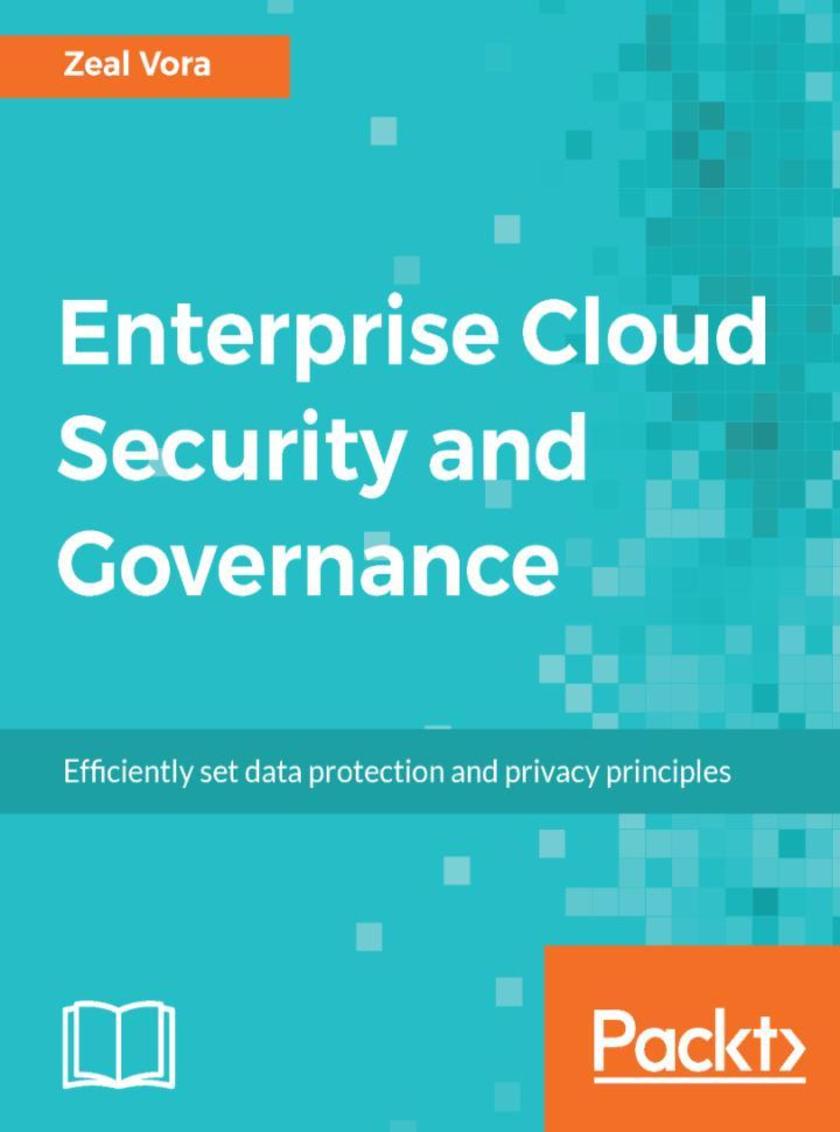
Enterprise Cloud Security and Governance
¥80.65
Build a resilient cloud architecture to tackle data disasters with ease About This Book ? Gain a firm grasp of Cloud data security and governance, irrespective of your Cloud platform ? Practical examples to ensure you secure your Cloud environment efficiently ? A step-by-step guide that will teach you the unique techniques and methodologies of Cloud data governance Who This Book Is For If you are a cloud security professional who wants to ensure cloud security and data governance no matter the environment, then this book is for you. A basic understanding of working on any cloud platform would be beneficial. What You Will Learn ? Configure your firewall and Network ACL ? Protect your system against DDOS and application-level attacks ? Explore cryptography and data security for your cloud ? Get to grips with configuration management tools to automate your security tasks ? Perform vulnerability scanning with the help of the standard tools in the industry ? Learn about central log management In Detail Modern day businesses and enterprises are moving to the Cloud, to improve efficiency and speed, achieve flexibility and cost effectiveness, and for on-demand Cloud services. However, enterprise Cloud security remains a major concern because migrating to the public Cloud requires transferring some control over organizational assets to the Cloud provider. There are chances these assets can be mismanaged and therefore, as a Cloud security professional, you need to be armed with techniques to help businesses minimize the risks and misuse of business data. The book starts with the basics of Cloud security and offers an understanding of various policies, governance, and compliance challenges in Cloud. This helps you build a strong foundation before you dive deep into understanding what it takes to design a secured network infrastructure and a well-architected application using various security services in the Cloud environment. Automating security tasks, such as Server Hardening with Ansible, and other automation services, such as Monit, will monitor other security daemons and take the necessary action in case these security daemons are stopped maliciously. In short, this book has everything you need to secure your Cloud environment with. It is your ticket to obtain industry-adopted best practices for developing a secure, highly available, and fault-tolerant architecture for organizations. Style and approach This book follows a step-by-step, practical approach to secure your applications and data when they are located remotely.
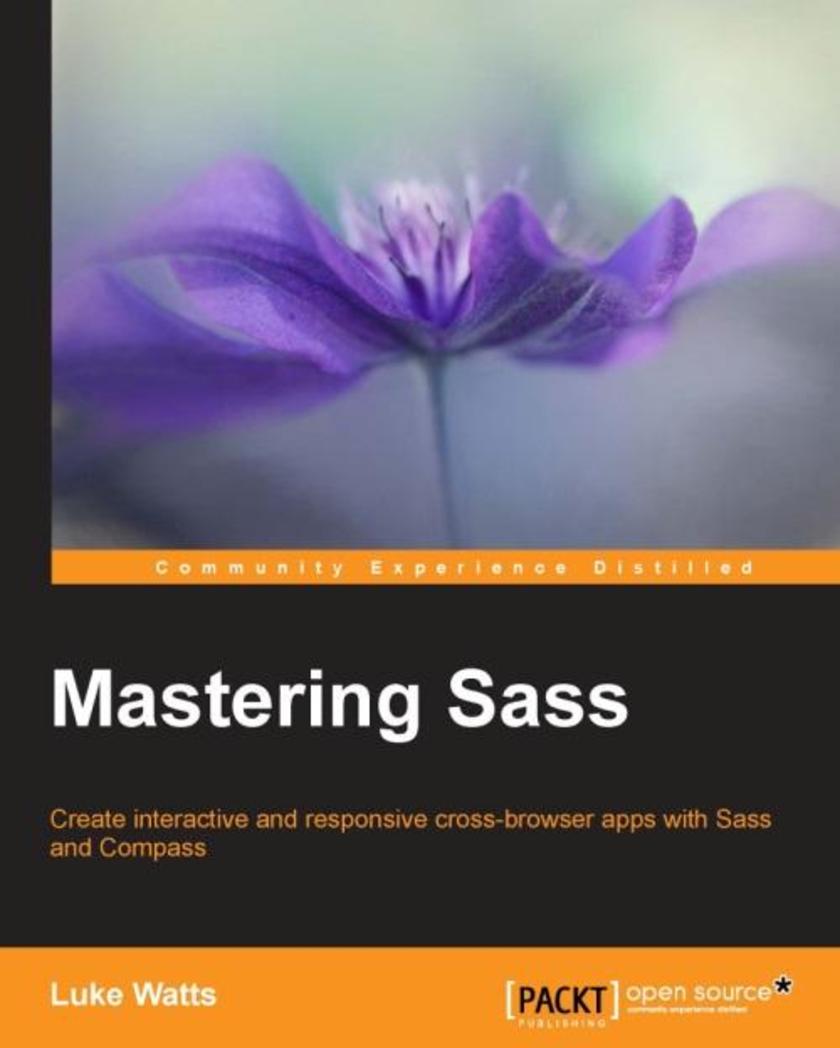
Mastering Sass
¥80.65
Create interactive and responsive cross-browser apps with SASS and Compass About This Book Create data-intensive, highly scalable apps using Sass and COMPASS Master the concepts of Sass and COMPASS and unleash your potential to develop enterprise-grade apps This book is an experts’ guide on leveraging Sass and COMPASS features Who This Book Is For This book is aimed at those who know CSS3 and HTML5 quite well and who've built a few small-to-medium-sized websites from scratch using Sass and Compass. What You Will Learn Master Sass and Compass features Familiarize yourself with CSS and HTML concepts that are vital for a good Sass workflow. Build real-world websites focusing on layouts and content aspects Work on a grid system using Compass and Susy Automate your workflow with Gulp Write functions and mixins to leverage the control flow In Detail CSS and Sass add elegance and excellence to the basic language, and consist of a CSS-compatible syntax that allows you to use variables, nested rules, mixins, inline imports, and much more. This book will start with an overview of the features in Sass and Compass, most of which you'll already be familiar; however, this will ensure you know what’s expected as the book goes deeper into Sass and Compass. Next you will learn CSS and HTML concepts that are vital to a good Sass workflow. After all, Sass exists to simplify writing CSS, but it won’t teach you how to make clean, scalable, reusable CSS. For that, you need to understand some basic concepts of OOCSS, SMACCS, and Atomic Design. Once you’ve brushed up on the important concepts, it’s time to write some Sass. Mainly you’ll write a few functions and mixins that really leverage control flow using @if / @else loops and you’ll learn how to figure out when and why things are going wrong before they bring you to a stop. Moving further, you’ll learn how to use @debug, @warn and @error to properly handle errors. You’ll also learn about Gulp and how to use it to automate your workflow and reduce your repetitive tasks. And finally you’ll learn about sourcemaps. With sourcemaps, you’ll be able to write, debug, and view your Sass and Compass all from within the browser. It’ll even LiveReload too! As a bonus, you’ll take a look at that funky Flexbox, currently all the rage! You’ll learn how powerful and flexible it really is, and how you can use it with Compass. Best of all, it falls back very gracefully indeed! In fact, you’ll be able to apply it to any existing project without having to change a line of the original CSS. Style and approach This book will provide readers with practical, actionable expertise to enhance their knowledge
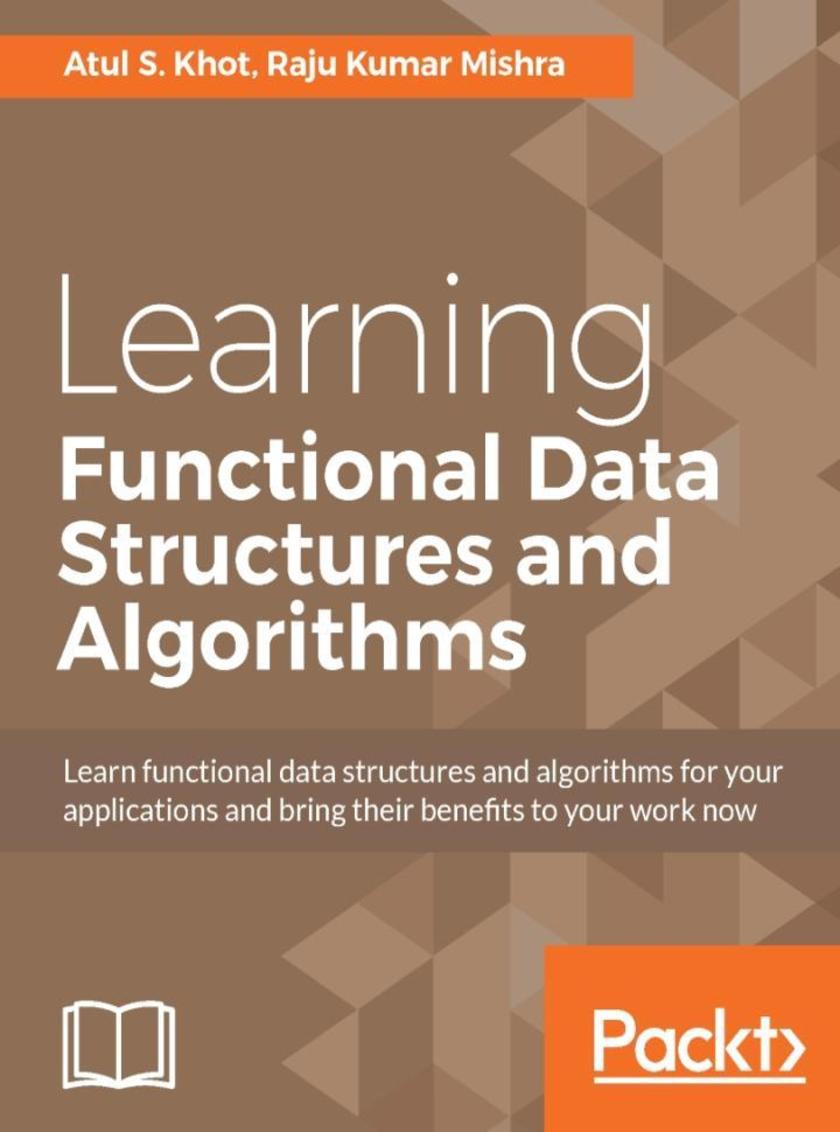
Learning Functional Data Structures and Algorithms
¥80.65
Learn functional data structures and algorithms for your applications and bring their benefits to your work now About This Book Moving from object-oriented programming to functional programmingThis book will help you get started with functional programming. Easy-to-understand explanations of practical topics will help you get started with functional data structures. Illustrative diagrams to explain the algorithms in detail. Get hands-on practice of Scala to get the most out of functional programming. Who This Book Is For This book is for those who have some experience in functional programming languages. The data structures in this book are primarily written in Scala, however implementing the algorithms in other functional languages should be straight forward. What You Will Learn Learn to think in the functional paradigm Understand common data structures and the associated algorithms, as well as the context in which they are commonly used Take a look at the runtime and space complexities with the O notation See how ADTs are implemented in a functional setting Explore the basic theme of immutability and persistent data structures Find out how the internal algorithms are redesigned to exploit structural sharing, so that the persistent data structures perform well, avoiding needless copying. Get to know functional features like lazy evaluation and recursion used to implement efficient algorithms Gain Scala best practices and idioms In Detail Functional data structures have the power to improve the codebase of an application and improve efficiency. With the advent of functional programming and with powerful functional languages such as Scala, Clojure and Elixir becoming part of important enterprise applications, functional data structures have gained an important place in the developer toolkit. Immutability is a cornerstone of functional programming. Immutable and persistent data structures are thread safe by definition and hence very appealing for writing robust concurrent programs. How do we express traditional algorithms in functional settingWon’t we end up copying too muchDo we trade performance for versioned data structuresThis book attempts to answer these questions by looking at functional implementations of traditional algorithms. It begins with a refresher and consolidation of what functional programming is all about. Next, you’ll get to know about Lists, the work horse data type for most functional languages. We show what structural sharing means and how it helps to make immutable data structures efficient and practical. Scala is the primary implementation languages for most of the examples. At times, we also present Clojure snippets to illustrate the underlying fundamental theme. While writing code, we use ADTs (abstract data types). Stacks, Queues, Trees and Graphs are all familiar ADTs. You will see how these ADTs are implemented in a functional setting. We look at implementation techniques like amortization and lazy evaluation to ensure efficiency. By the end of the book, you will be able to write efficient functional data structures and algorithms for your applications. Style and approach Step-by-step topics will help you get started with functional programming. Learn by doing with hands-on code snippets that give you practical experience of the subject.

Mastering F#
¥80.65
A comprehensive and in-depth guide to writing functional programs using F# About This Book Learn how to manage, run, and automate your servers using Puppet Explore how to use F# to develop large-scale applications quickly and simply, and become more productive in today’s age of cloud computing and multi-core programming This easy-to-follow guide is packed with real-world examples that will jump-start you with F# development on the .NET platform Who This Book Is For If you are a C# developer with a basic knowledge of F# and want to explore the functional programming paradigm further to master your F# skills, then this book is for you. What You Will Learn Understand the basics of F# and organize F# source code with Visual Studio Work with F# data structures and create functional data structures in F# interoperate with C# Build and use asynchronous programming patterns with F# Create and use type providers that help perform data analysis from within Visual Studio Develop applications with pure F# code in WPF or ASP.NET MVC Find out how to perform distributed programming with ServiceBus or ZeroMQ Visualize data with charts, and work with Excel and R language Type providers In Detail F# is a multi-paradigm programming language that encompasses object-oriented, imperative, and functional programming language properties. Now adopted in a wide range of application areas and is supported both by industry-leading companies who provide professional tools and by an active open community, F# is rapidly gaining popularity as it emerges in digital music advertising, creating music-focused ads for Spotify, Pandora, Shazam, and anywhere on the web. This book will guide you through the basics and will then help you master F#. The book starts by explaining how to use F# with Visual Studio, file ordering, and the differences between F# and C# in terms of usage. It moves on to explain the functional core of F# such as data types, type declarations, immutability, strong type interference, pattern matching, records, F# data structures, sequence expressions, and lazy evaluation. Next, the book takes you through imperative and asynchronous programming, F# type providers, applications, and testing in F#. Finally, we look into using F# with distributed programming and using F# as a suitable language for data science. In short, this book will help you learn F# for real-world applications and increase your productivity with functional programming. Style and approach This easy-to-follow guide with syntaxes will help you master the concepts of F#. Packed with in-depth examples of real-world uses, this book covers each topic in detail with a reference to C#, so you will understand the difference between the languages.
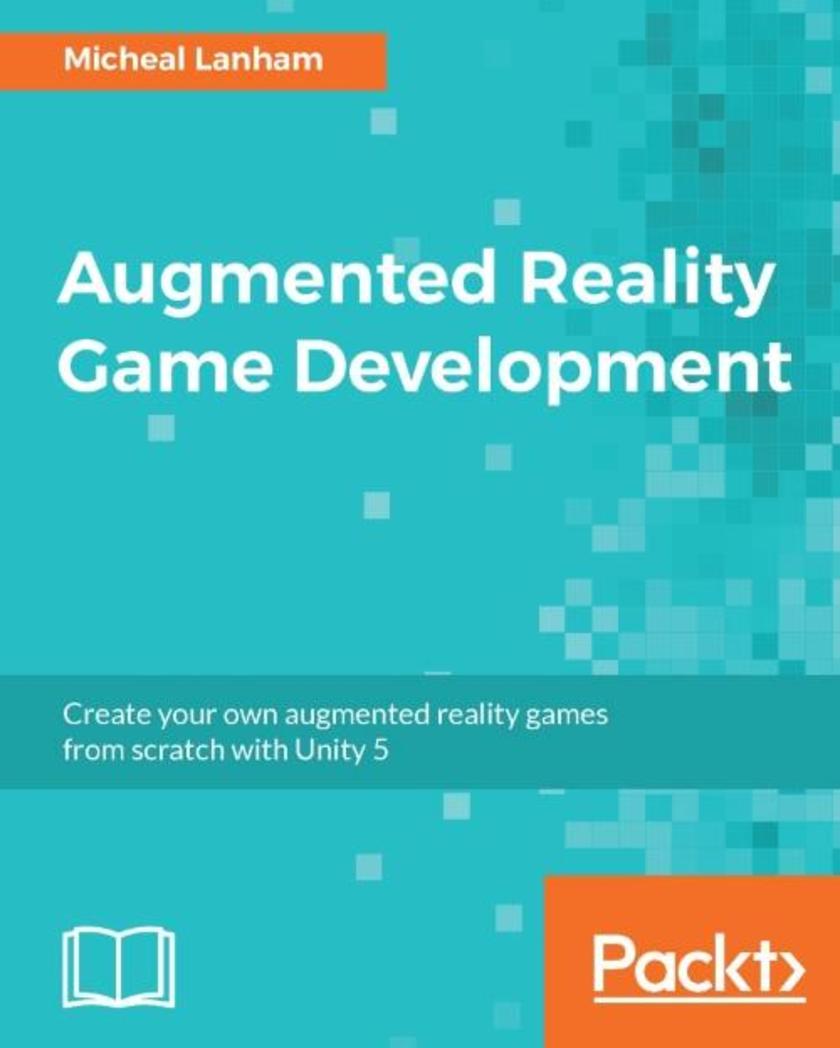
Augmented Reality Game Development
¥80.65
Create your own augmented reality games from scratch with Unity 5 About This Book Create your own augmented reality game from scratch and join the virtual reality gaming revolution Use the latest Unity 5 VR SDK to create pro-level AR games like Pokémon Go Innovate and explore the latest and most promising trend of AR gaming in the mobile gaming industry Who This Book Is For This book is for those who have a basic knowledge of game development techniques, but no previous knowledge of Unity is required. Some basic programming knowledge would be desirable, but the book is an introduction to the topic. The book is also suitable for experienced developers new to GIS or GPS development. What You Will Learn Build a location-based augmented reality game called Foodie Go Animate a player’s avatar on a map Use the mobile device’s camera as a game background Implement database persistence with SQLLite4Unity3D to carry inventory items across game sessions Create basic UI elements for the game, inventory, menu, and settings Perform location and content searches against the Google Places API Enhance the game’s mood by adding visual shader effects Extend the game by adding multiplayer networking and other enhancements In Detail The heyday of location-based augmented reality games is upon us. They have been around for a few years, but the release of Pokémon Go was a gamechanger that catalyzed the market and led to a massive surge in demand. Now is the time for novice and experienced developers alike to turn their good ideas into augmented reality (AR) mobile games and meet this demand! If you are keen to develop virtual reality games with the latest Unity 5 toolkit, then this is the book for you. The genre of location-based AR games introduces a new platform and technical challenges, but this book will help simplify those challenges and show how to maximize your game audience. This book will take you on a journey through building a location-based AR game that addresses the core technical concepts: GIS fundamentals, mobile device GPS, mapping, map textures in Unity, mobile device camera, camera textures in Unity, accessing location-based services, and other useful Unity tips. The technical material also discusses what is necessary for further development to create a multiplayer version of the game. At the end, you will be presented with troubleshooting techniques in case you get into trouble and need a little help. Style and approach This book shows you how to create every step of the game and gives practical examples.

Implementing DevOps on AWS
¥80.65
Bring the best out of DevOps and build, deploy, and maintain applications on AWS About This Book Work through practical examples and gain DevOps best practices to successfully deploy applications on AWS Successfully provision and operate distributed application systems and your AWS infrastructure using DevOps Perform Continuous Integration and deployment and fine-tune the way you deliver on AWS Who This Book Is For This book is for system administrators and developers who manage AWS infrastructure and environments and are planning to implement DevOps in their organizations. Those aiming for the AWS Certified DevOps Engineer certification will also find this book useful. Prior experience of operating and managing AWS environments is expected. What You Will Learn See the difference between Object Oriented Programming and Protocol Oriented Programming See the difference between reference and value types and when to use each Find out how we can leverage the tuple to reduce the complexity of our code Discover what protocols are and how to use them See how to implement protocol extensions to create a very flexible code base Learn how to implement several design patterns in a Protocol-Oriented approach Learn how to solve real-world design issues with protocol-oriented programming In Detail Knowing how to adopt DevOps in your organization is becoming an increasingly important skill for developers, whether you work for a start-up, an SMB, or an enterprise. This book will help you to drastically reduce the amount of time spent on development and increase the reliability of your software deployments on AWS using popular DevOps methods of automation. To start, you will get familiar with the concept of IaC and will learn to design, deploy, and maintain AWS infrastructure. Further on, you’ll see how to design and deploy a Continuous Integration platform on AWS using either open source or AWS provided tools/services. Following on from the delivery part of the process, you will learn how to deploy a newly created, tested, and verified artefact to the AWS infrastructure without manual intervention. You will then find out what to consider in order to make the implementation of Configuration Management easier and more effective. Toward the end, you will get to know the tricks and tips to optimize and secure your AWS environment. By the end of the book, you will have mastered the art of applying AWS to DevOps in your organization Style and approach This book is packed full of real-world examples demonstrating use cases that help you deploy DevOps best practices on AWS.

Mastering SFML Game Development
¥80.65
Create complex and visually stunning games using all the advanced features available in SFML development About This Book Build custom tools, designed to work with your specific game. Use raw modern OpenGL and go beyond SFML. Revamp your code for better structural design, faster rendering, and flashier graphics. Use advanced lighting techniques to add that extra touch of sophistication. Implement a very fast and efficient particle system by using a cache-friendly design. Who This Book Is For This book is ideal for game developers who have some basic knowledge of SFML and also are familiar with C++ coding in general. No knowledge of OpenGL or even more advanced rendering techniques is required. You will be guided through every bit of code step by step. What You Will Learn Dive deep into creating complex and visually stunning games using SFML, as well as advanced OpenGL rendering and shading techniques Build an advanced, dynamic lighting and shadowing system to add an extra graphical kick to your games and make them feel a lot more dynamic Craft your own custom tools for editing game media, such as maps, and speed up the process of content creation Optimize your code to make it blazing fast and robust for the users, even with visually demanding scenes Get a complete grip on the best practices and industry grade game development design patterns used for AAA projects In Detail SFML is a cross-platform software development library written in C++ with bindings available for many programming languages. It provides a simple interface to the various components of your PC, to ease the development of games and multimedia applications. This book will help you become an expert of SFML by using all of its features to its full potential. It begins by going over some of the foundational code necessary in order to make our RPG project run. By the end of chapter 3, we will have successfully picked up and deployed a fast and efficient particle system that makes the game look much more ‘alive’. Throughout the next couple of chapters, you will be successfully editing the game maps with ease, all thanks to the custom tools we’re going to be building. From this point on, it’s all about making the game look good. After being introduced to the use of shaders and raw OpenGL, you will be guided through implementing dynamic scene lighting, the use of normal and specular maps, and dynamic soft shadows. However, no project is complete without being optimized first. The very last chapter will wrap up our project by making it lightning fast and efficient. Style and approach This book uses a step by step approach by breaking the problems down into smaller, much more manageable obstacles, and guiding the reader through them with verified, flexible, and autonomous solutions.
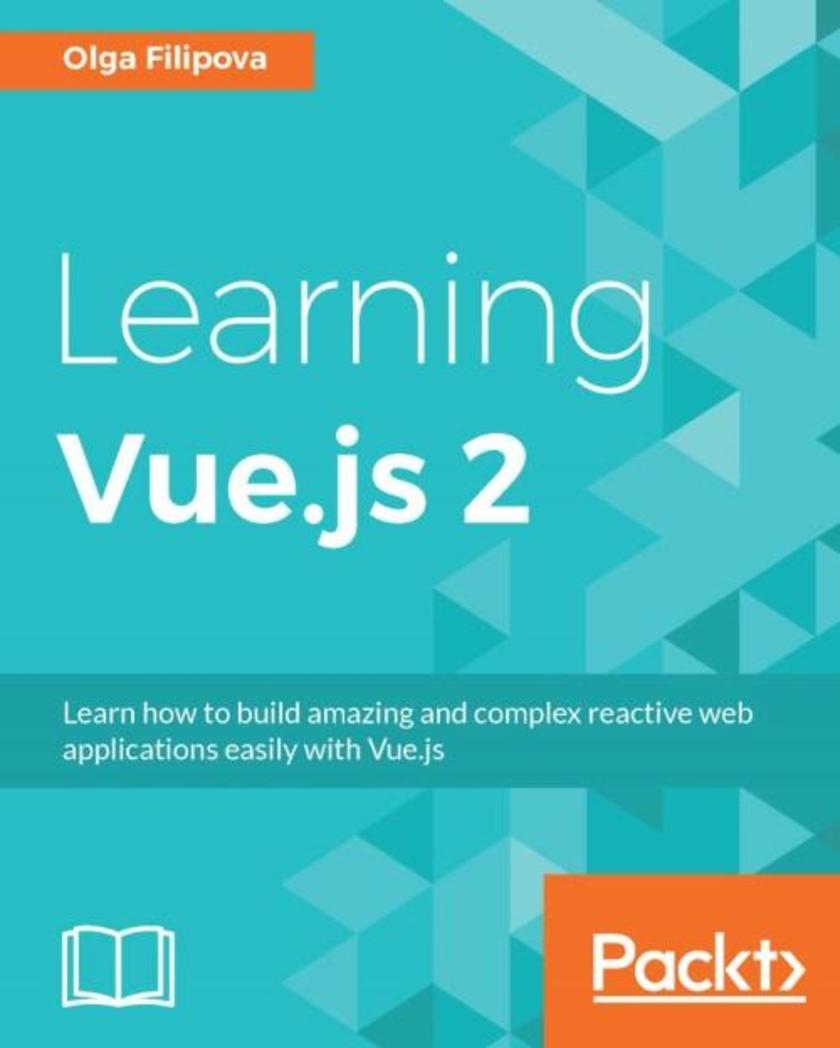
Learning Vue.js 2
¥80.65
Learn how to build amazing and complex reactive web applications easily with Vue.js About This Book Learn how to propagate DOM changes across the website without writing extensive jQuery callbacks code. Learn how to achieve reactivity and easily compose views with Vue.js and understand what it does behind the scenes. Explore the core features of Vue.js with small examples, learn how to build dynamic content into preexisting web applications, and build Vue.js applications from scratch. Who This Book Is For This book is perfect for novice web developer seeking to learn new technologies or frameworks and also for webdev gurus eager to enrich their experience. Whatever your level of expertise, this book is a great introduction to the wonderful world of reactive web apps. What You Will Learn Build a fully functioning reactive web application in Vue.js from scratch. The importance of the MVVM architecture and how Vue.js compares with other frameworks such as Angular.js and React.js. How to bring reactivity to an existing static application using Vue.js. How to use plugins to enrich your applications. How to develop customized plugins to meet your needs. How to use Vuex to manage global application’s state. In Detail Vue.js is one of the latest new frameworks to have piqued the interest of web developers due to its reactivity, reusable components, and ease of use. This book shows developers how to leverage its features to build high-performing, reactive web interfaces with Vue.js. From the initial structuring to full deployment, this book provides step-by-step guidance to developing an interactive web interface from scratch with Vue.js. You will start by building a simple application in Vue.js which will let you observe its features in action. Delving into more complex concepts, you will learn about reactive data binding, reusable components, plugins, filters, and state management with Vuex. This book will also teach you how to bring reactivity to an existing static application using Vue.js. By the time you finish this book you will have built, tested, and deployed a complete reactive application in Vue.js from scratch. Style and approach This book is a thorough, step-by-step guide showing readers how to build complete web apps with Vue.js. While teaching its intricacies, this book shows how to implement the MVVM architecture in the real world and build high-performing web interfaces.
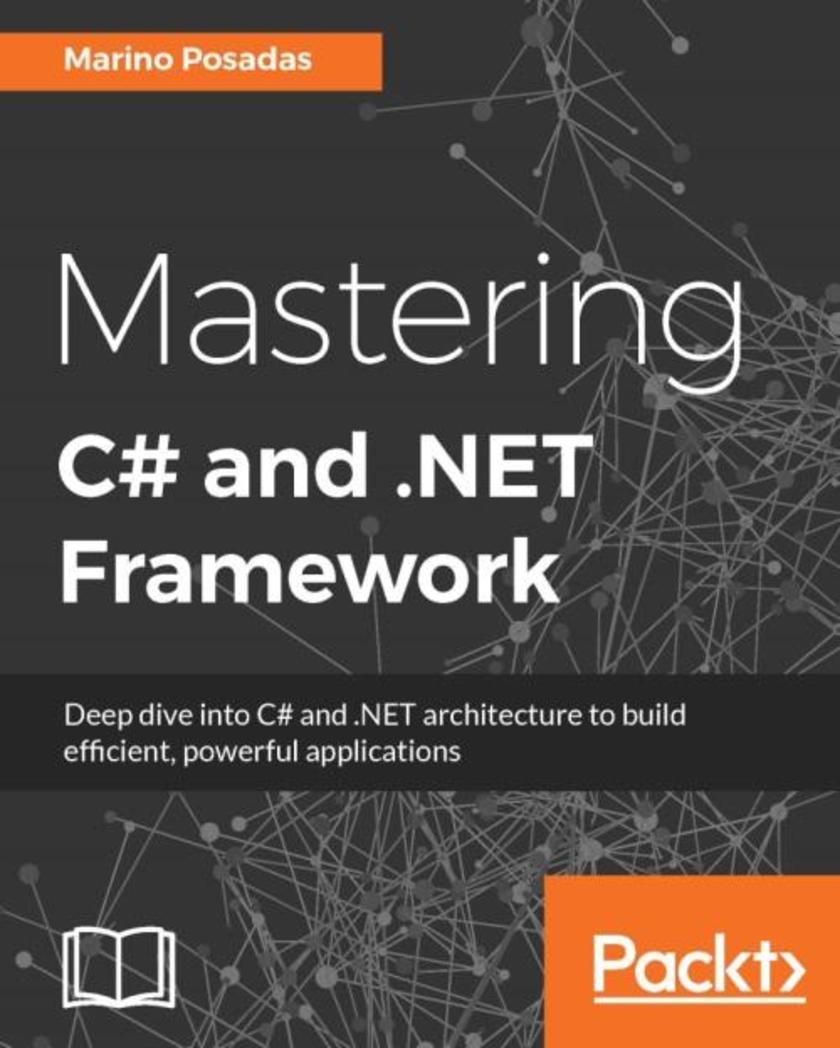
Mastering C# and .NET Framework
¥80.65
Deep dive into C# and .NET architecture to build efficient, powerful applications About This Book Uniquely structured content to help you understand what goes on under the hood of .NET’s managed code platform to master .NET programming Deep dive into C# programming and how the code executes via the CLR Packed with hands-on practical examples, you’ll understand how to write applications to make full use of the new features of .NET 4.6, .NET Core and C# 6/7 Who This Book Is For This book was written exclusively for .NET developers. If you’ve been creating C# applications for your clients, at work or at home, this book will help you develop the skills you need to create modern, powerful, and efficient applications in C#. No knowledge of C# 6/7 or .NET 4.6 is needed to follow along—all the latest features are included to help you start writing cross-platform applications immediately. You will need to be familiar with Visual Studio, though all the new features in Visual Studio 2015 will also be covered. What You Will Learn Understand C# core concepts in depth, from sorting algorithms to the Big O notation Get up to speed with the latest changes in C# 6/7 Interface SQL Server and NoSQL databases with .NET Apprehend SOLID principles and the most relevant GoF Patterns with practical examples in C# 6.0 Defend C# applications against attacks Use Roslyn, a self-hosted framework to compile and advanced edition in both C# and Visual basic .NET languages Discern LINQ and associated Lambda expressions, generics, and delegates Design a .NET application from the ground up Understand the internals of a .NET assembly Grasp some useful advanced features in optimization and parallelism In Detail Mastering C# and .NET Framework will take you in to the depths of C# 6.0/7.0 and .NET 4.6, so you can understand how the platform works when it runs your code, and how you can use this knowledge to write efficient applications. Take full advantage of the new revolution in .NET development, including open source status and cross-platform capability, and get to grips with the architectural changes of CoreCLR. Start with how the CLR executes code, and discover the niche and advanced aspects of C# programming – from delegates and generics, through to asynchronous programming. Run through new forms of type declarations and assignments, source code callers, static using syntax, auto-property initializers, dictionary initializers, null conditional operators, and many others. Then unlock the true potential of the .NET platform. Learn how to write OWASP-compliant applications, how to properly implement design patterns in C#, and how to follow the general SOLID principles and its implementations in C# code. We finish by focusing on tips and tricks that you'll need to get the most from C# and .NET. This book also covers .NET Core 1.1 concepts as per the latest RTM release in the last chapter. Style and approach This book uses hands-on practical code examples that will take you into the depths of C# and .NET. Packed with hands-on practical examples, it is great as a tutorial, or as a reference guide.
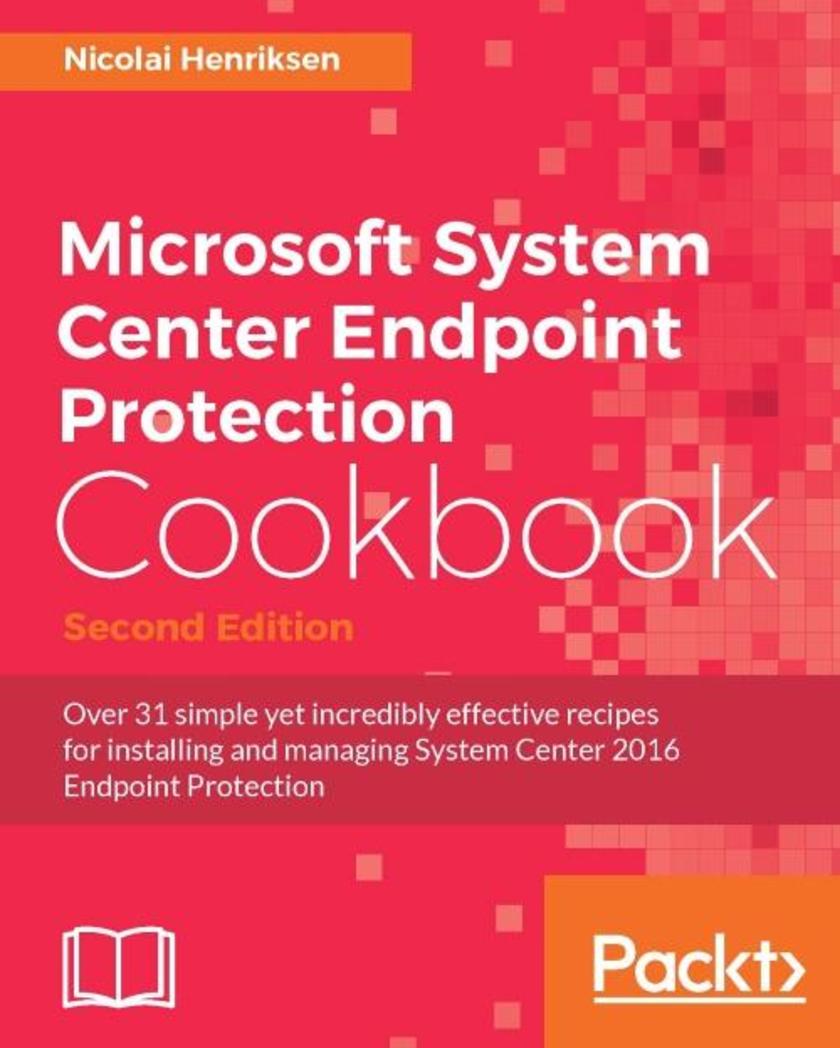
Microsoft System Center Endpoint Protection Cookbook - Second Edition
¥80.65
Over 31 simple yet incredibly effective recipes for installing and managing System Center 2016 Endpoint Protection About This Book This is the most practical and up-to-date book covering important new features of System Center 2016 Endpoint protection Gain confidence in managing IT and protecting your server against malware and other threats Configure and automate reporting features and also prepare yourself for a simple and pain-free migration process Who This Book Is For If you are a System Administrator or Engineer using System Center 2016 Endpoint Protection, then this book is for you. You should have a good background with Microsoft products in general, although no knowledge of Endpoint Protection is required. What You Will Learn Explore the best practices for Endpoint Protection in System Center Configuration Manager Provision the Endpoint Protection Client in a Disk Image in Configuration Manager Get to know more about the Security Center Configure definition and engine client updates to be optimum for your bandwidth Make your application or server work with Endpoint Protection enabled Find out how to deal with typical issues that may occur with Endpoint Protection Know how to respond to infections that often occur In Detail System Center Configuration Manager is now used by over 70% of all the business in the world today and many have taken advantage engaging the System Center Endpoint Protection within that great product. Through this book, you will gain knowledge about System Center Endpoint Protection, and see how to work with it from System Center Configuration Manager from an objective perspective. We’ll show you several tips, tricks, and recipes to not only help you understand and resolve your daily challenges, but hopefully enhance the security level of your business. Different scenarios will be covered, such as planning and setting up Endpoint Protection, daily operations and maintenance tips, configuring Endpoint Protection for different servers and applications, as well as workstation computers. You’ll also see how to deal with malware and infected systems that are discovered. You’ll find out how perform OS deployment, Bitlocker, and Applocker, and discover what to do if there is an attack or outbreak. You’ll find out how to ensure good control and reporting, and great defense against threats and malware software. You’ll see the huge benefits when dealing with application deployments, and get to grips with OS deployments, software updates, and disk encryption such as Bitlocker. By the end, you will be fully aware of the benefits of the System Center 2016 Endpoint Protection anti-malware product, ready to ensure your business is watertight against any threat you could face. Style and approach Build robust SCEP and AV policies and discover the new potential of exciting new features of SCEP 2016.

Apache Spark for Data Science Cookbook
¥80.65
Over insightful 90 recipes to get lightning-fast analytics with Apache Spark About This Book Use Apache Spark for data processing with these hands-on recipes Implement end-to-end, large-scale data analysis better than ever before Work with powerful libraries such as MLLib, SciPy, NumPy, and Pandas to gain insights from your data Who This Book Is For This book is for novice and intermediate level data science professionals and data analysts who want to solve data science problems with a distributed computing framework. Basic experience with data science implementation tasks is expected. Data science professionals looking to skill up and gain an edge in the field will find this book helpful. What You Will Learn Explore the topics of data mining, text mining, Natural Language Processing, information retrieval, and machine learning. Solve real-world analytical problems with large data sets. Address data science challenges with analytical tools on a distributed system like Spark (apt for iterative algorithms), which offers in-memory processing and more flexibility for data analysis at scale. Get hands-on experience with algorithms like Classification, regression, and recommendation on real datasets using Spark MLLib package. Learn about numerical and scientific computing using NumPy and SciPy on Spark. Use Predictive Model Markup Language (PMML) in Spark for statistical data mining models. In Detail Spark has emerged as the most promising big data analytics engine for data science professionals. The true power and value of Apache Spark lies in its ability to execute data science tasks with speed and accuracy. Spark’s selling point is that it combines ETL, batch analytics, real-time stream analysis, machine learning, graph processing, and visualizations. It lets you tackle the complexities that come with raw unstructured data sets with ease. This guide will get you comfortable and confident performing data science tasks with Spark. You will learn about implementations including distributed deep learning, numerical computing, and scalable machine learning. You will be shown effective solutions to problematic concepts in data science using Spark’s data science libraries such as MLLib, Pandas, NumPy, SciPy, and more. These simple and efficient recipes will show you how to implement algorithms and optimize your work. Style and approach This book contains a comprehensive range of recipes designed to help you learn the fundamentals and tackle the difficulties of data science. This book outlines practical steps to produce powerful insights into Big Data through a recipe-based approach.
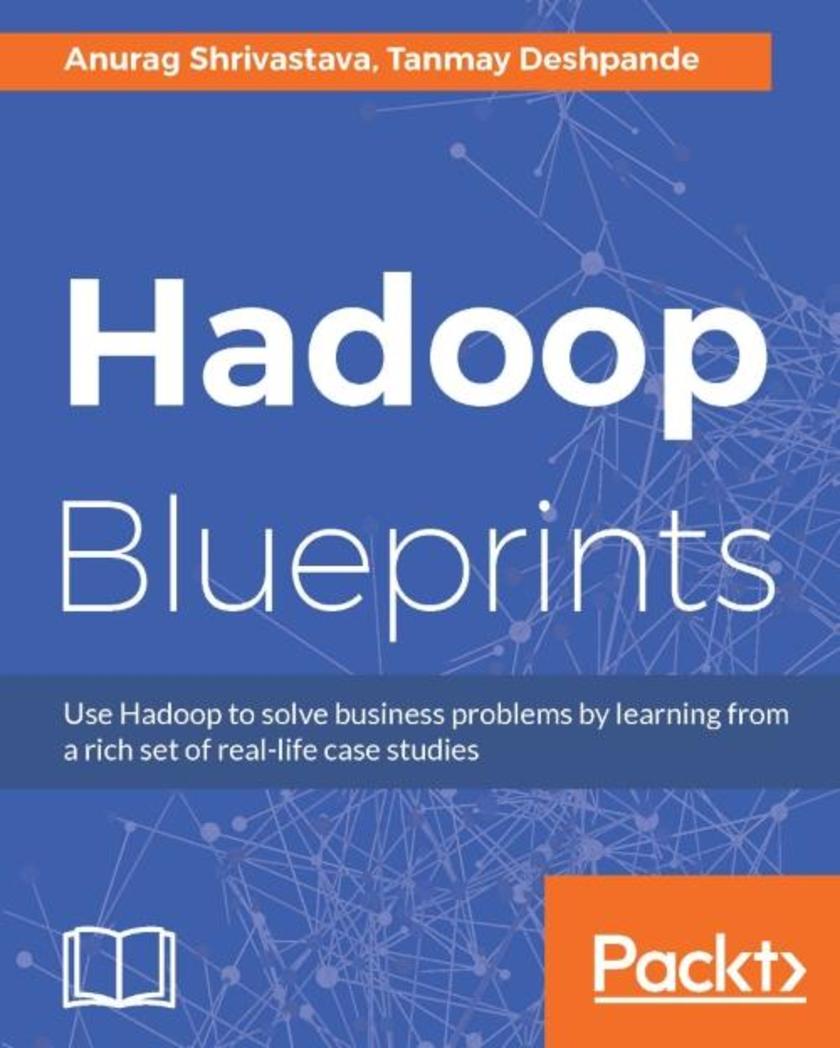
Hadoop Blueprints
¥80.65
Use Hadoop to solve business problems by learning from a rich set of real-life case studies About This Book Solve real-world business problems using Hadoop and other Big Data technologies Build efficient data lakes in Hadoop, and develop systems for various business cases like improving marketing campaigns, fraud detection, and more Power packed with six case studies to get you going with Hadoop for Business Intelligence Who This Book Is For If you are interested in building efficient business solutions using Hadoop, this is the book for you This book assumes that you have basic knowledge of Hadoop, Java, and any *ing language. What You Will Learn Learn about the evolution of Hadoop as the big data platform Understand the basics of Hadoop architecture Build a 360 degree view of your customer using Sqoop and Hive Build and run classification models on Hadoop using BigML Use Spark and Hadoop to build a fraud detection system Develop a churn detection system using Java and MapReduce Build an IoT-based data collection and visualization system Get to grips with building a Hadoop-based Data Lake for large enterprises Learn about the coexistence of NoSQL and In-Memory databases in the Hadoop ecosystem In Detail If you have a basic understanding of Hadoop and want to put your knowledge to use to build fantastic Big Data solutions for business, then this book is for you. Build six real-life, end-to-end solutions using the tools in the Hadoop ecosystem, and take your knowledge of Hadoop to the next level. Start off by understanding various business problems which can be solved using Hadoop. You will also get acquainted with the common architectural patterns which are used to build Hadoop-based solutions. Build a 360-degree view of the customer by working with different types of data, and build an efficient fraud detection system for a financial institution. You will also develop a system in Hadoop to improve the effectiveness of marketing campaigns. Build a churn detection system for a telecom company, develop an Internet of Things (IoT) system to monitor the environment in a factory, and build a data lake – all making use of the concepts and techniques mentioned in this book. The book covers other technologies and frameworks like Apache Spark, Hive, Sqoop, and more, and how they can be used in conjunction with Hadoop. You will be able to try out the solutions explained in the book and use the knowledge gained to extend them further in your own problem space. Style and approach This is an example-driven book where each chapter covers a single business problem and describes its solution by explaining the structure of a dataset and tools required to process it. Every project is demonstrated with a step-by-step approach, and explained in a very easy-to-understand manner.
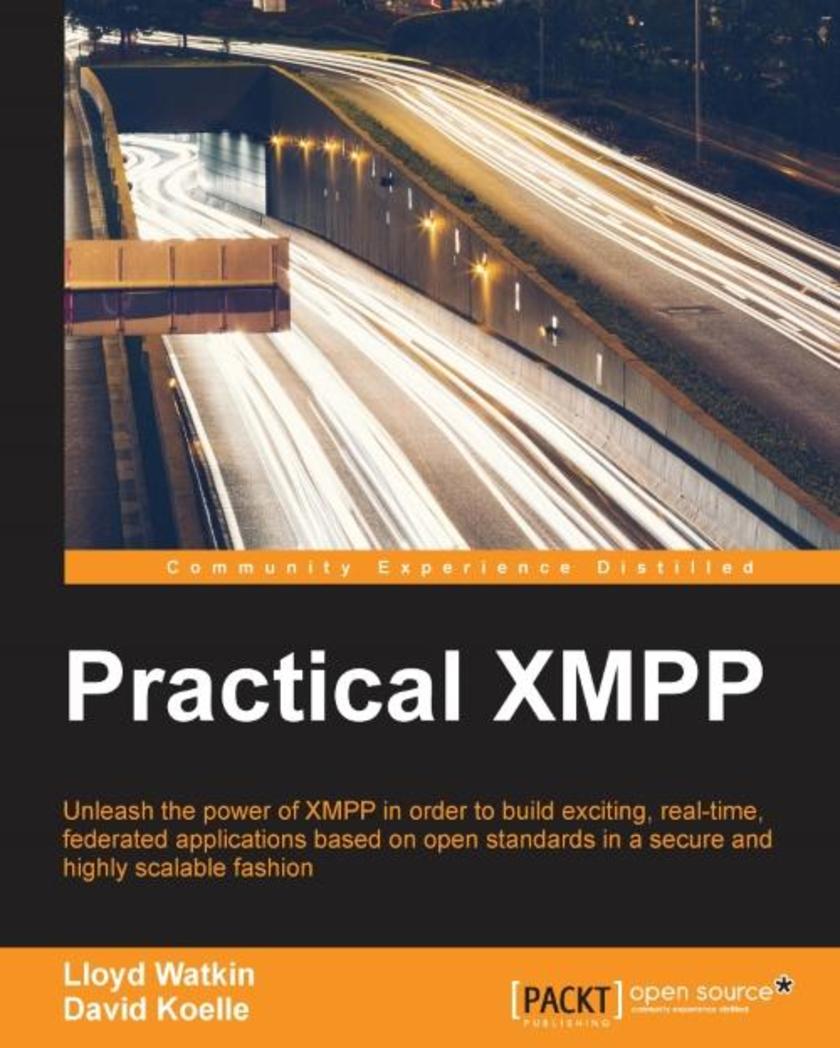
Practical XMPP
¥80.65
Unleash the power of XMPP in order to build exciting, real-time, federated applications based on open standards in a secure and highly scalable fashion About This Book Learn about the fundamentals of XMPP and be able to work with the core functionality both server-side and in the browser Build a simple 1-to-1 chat (the “Hello World” of XMPP), explore multi-user chat, publish subscribe systems, and work with a decentralized social network Author Lloyd Watkins is a member of the XMPP standards committee Who This Book Is For If you want to learn about the fundamentals of XMPP, be able to work with the core functionality both server-side and in the browser then this book is for you.No knowledge of XMPP is required, or of TCP/IP networking. It's important that you already know how to build applications of some form, and are looking get a better understanding of how to implement XMPP for one or more of its many uses. You should be interested in the decentralized web, know HTML, and likely know JavaScript and NodeJS. You will probably know JSON, and hopefully XML (this is the native output of XMPP). What You Will Learn Install and configure an XMPP server and use it to connect from a traditional desktop client and send a message Build a simple server-side application that will respond to messages from our logged in desktop client Install and run XMPP-FTW, connect to the server from the browser, and handle incoming/outgoing messages Connect to a multi-user chat room, send/receive stanzas, add a room password, join a protected room, set the room’s subject, and change a user's affiliation Get to grips with the publish-subscribe extension of XMPP and use it to build a pusher system that can make any website real-time Build a simple XMPP component and create an extension for XMPP-FTW that allows you to use your own custom format Build an XMPP version of the classic game “Pong” In Detail XMPP (eXtensible Messaging and Presence Protocol) is a messaging protocol that enables communication between two or more devices via the Internet. With this book, developers will learn about the fundamentals of XMPP, be able to work with the core functionality both server-side and in the browser, as well as starting to explore several of the protocol extensions. You will not only have a solid grasp of XMPP and how it works, but will also be able to use the protocol to build real-world applications that utilize the power of XMPP. By the end of this book, you will know more about networking applications in general, and have a good understanding of how to extend XMPP, as well as using it in sample applications. Style and approach Through a number of hands-on projects, this book shows you how to build usable applications that highlights a feature of XMPP.

Kali Linux 2 – Assuring Security by Penetration Testing - Third Edition
¥80.65
Achieve the gold standard in penetration testing with Kali using this masterpiece, now in its third edition! About This Book Get a rock-solid insight into penetration testing techniques and test your corporate network against threats like never before Formulate your pentesting strategies by relying on the most up-to-date and feature-rich Kali version in town—Kali Linux 2 (aka Sana). Experience this journey with new cutting-edge wireless penetration tools and a variety of new features to make your pentesting experience smoother Who This Book Is For If you are an IT security professional or a student with basic knowledge of Unix/Linux operating systems, including an awareness of information security factors, and you want to use Kali Linux for penetration testing, this book is for you. What You Will Learn Find out to download and install your own copy of Kali Linux Properly scope and conduct the initial stages of a penetration test Conduct reconnaissance and enumeration of target networks Exploit and gain a foothold on a target system or network Obtain and crack passwords Use the Kali Linux NetHunter install to conduct wireless penetration testing Create proper penetration testing reports In Detail Kali Linux is a comprehensive penetration testing platform with advanced tools to identify, detect, and exploit the vulnerabilities uncovered in the target network environment. With Kali Linux, you can apply appropriate testing methodology with defined business objectives and a scheduled test plan, resulting in a successful penetration testing project engagement. Kali Linux – Assuring Security by Penetration Testing is a fully focused, structured book providing guidance on developing practical penetration testing skills by demonstrating cutting-edge hacker tools and techniques with a coherent, step-by-step approach. This book offers you all of the essential lab preparation and testing procedures that reflect real-world attack scenarios from a business perspective, in today's digital age. Style and approach This practical guide will showcase penetration testing through cutting-edge tools and techniques using a coherent, step-by-step approach.
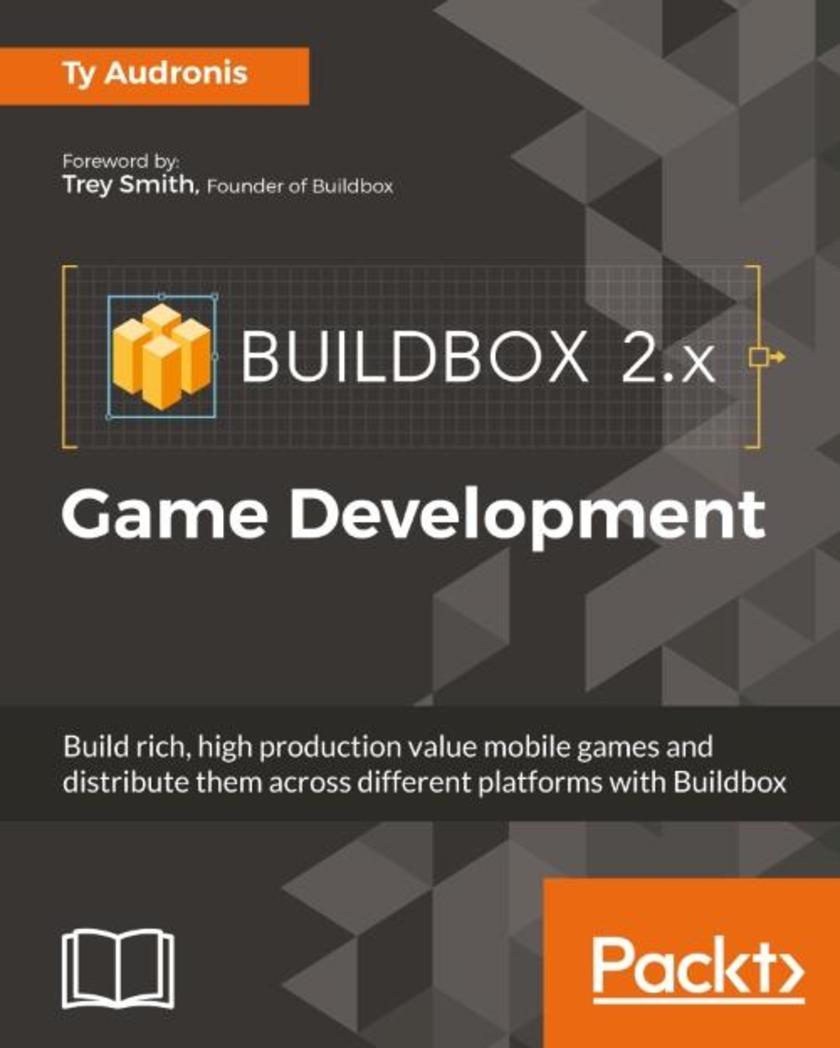
Buildbox 2.x Game Development
¥80.65
Build rich, high production value mobile games and distribute them across different platforms with Buildbox About This Book Create captivating 2D & 2.5D (isometric) video games for all platforms Leverage Buildbox to monetize and prepare your games for distribution This step-by-step tutorial will get you generating complex and media rich games with no coding experience Who This Book Is For This book caters to those who have an interest or desire to create their own mobile games either as a hobbyist or who are looking to enhance their skills as a professional games developer. No coding experience is required. What You Will Learn Create the illusion of a 3D background in your game using parallax Add advanced controls and obstacles to our first world Develop assets (graphic and audio) for the Buildbox engine Design games based on the capabilities and limitations of Buildbox and their target platforms Compile and distribute video games on various channels such as Steam, iOS store, Android stores, and the Mac App Store Optimize your games to get the absolute best quality within platform restrictions Conquer common issues experienced with Buildbox development In Detail Buildbox is an “any skill level” development platform to develop video games with no coding experience. It also exports these games to be compiled for any platform (from Windows to Mac to iOS to Android and Blackberry) all using the same graphic user interface. Using an example as a tutorial, we will relate the driving principles and you’ll see how you can implement these principles to develop any games on the platform. We begin by setting expectations and providing a brief overview of the software. But it’s not long before you “dive in” to creating your first video game. You will actually have a playable level (“world”) by the end of the second chapter. Later on, you’ll learn everything from basic graphics creation to advanced world design while you refine your first game, called “Ramblin’ Rover.” All along the way, you will see how certain functions could be used in tandem to create other types of games; hoping to spark imagination. We will follow the principles and process of monetization through ads and in-game rewards. Lastly, we will go through the process of exporting, compiling, and preparing your storefront to sell the games you will eventually create. Style and approach This book follows a tutorial-based approach that teaches through examples, while also providing the necessary principles to enable you to abstract these principles into any game you want to make.
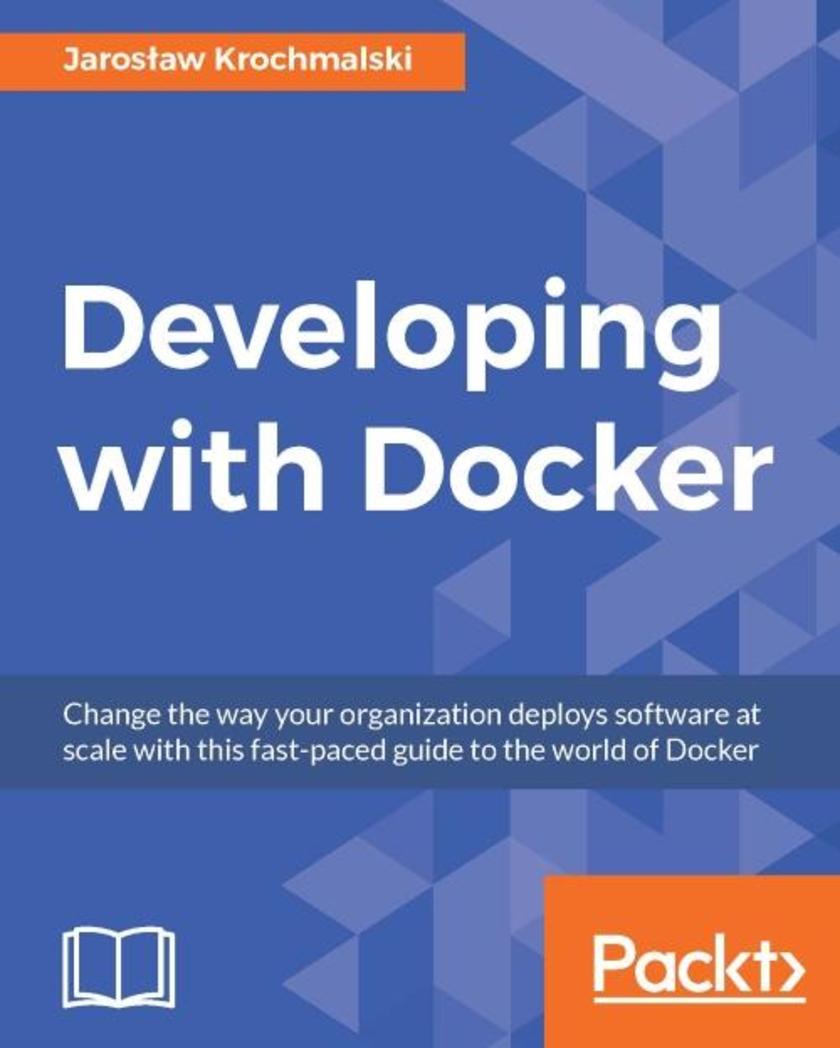
Developing with Docker
¥80.65
Change the way your organization deploys software at scale with this face paced guide to the world of Docker About This Book Cut through the noise and in simple terms learn to package your applications and test, ship, and scale your containers Find and build images and successfully run your programs within containers Build, deploy, and test your Docker containers and put them to work in production Who This Book Is For This book is for IT professionals, system administrators, and DevOps professionals or anyone looking to quickly develop and deploy software to production at scale. If you are interested in Docker, DevOps, or containers in general, don’t look any further. What You Will Learn Understand Docker’s architecture Build, ship, and run distributed applications Deploy, automate, and manage the execution of applications within Docker Scale and virtualize images and containers Utilize the networking features that Docker offers Use repositories to store and retrieve images In Detail This fast-paced practical guide will get you up and running with Docker. Using Docker, you will be able to build, ship, and run many distributed applications in real time. You will start with quickly installing Docker and start working with images and containers. We will present different types of containers and their applications, and show you how to find and build images. You will learn how you can contribute to the image repository by publishing different images. This will familiarize you with the image building process and you will be able to successfully run your programs within containers. By finishing this book, you will be well equipped in deploying your applications using Docker and will have a clear understanding of concepts, techniques, and practical methods to get it running in production systems. Style and approach This book takes a fast-paced practical approach that quickly gets you up and running with Docker so that you spend less time learning and more time deploying Docker containers effectively. This book contains a mix of concepts, practical examples, techniques, and the most up-to-date content to run things effectively in production. We’ll show you the easiest way to speed up your development and deployment with Docker.

MEAN Web Development - Second Edition
¥80.65
Develop your real-time MEAN application efficiently using a combination of MongoDB, Express, Angular, and Node About This Book Construct a fully-functional MEAN application by using its components along with the best third-party modules Harness the power of the JavaScript ecosystem to effectively run, build, and test your MEAN application Gain a deep, practical understanding of real-time web application development through real-world examples Who This Book Is For If you are a JavaScript developer who is interested in building modern web applications using MongoDB, Express, Angular 2, and Node 5.0, then this book is for you. You only need knowledge of JavaScript development. What You Will Learn Use MongoDB to store and retrieve your application's data Connect your Express application to MongoDB and use the Mongoose module Manage your users' authentication and offer them diverse login options using Passport Structure and use an Angular 2 application in your MEAN project Use Socket.io to create real-time communication between your client and server Test your application's Express and Angular 2 entities In Detail The MEAN stack is a collection of the most popular modern tools for web development that helps you build fast, robust, and maintainable web applications. Starting with the MEAN core frameworks, this pragmatic guide will explain the key concepts of each framework, how to set them up properly, and how to use popular modules to connect it all together. By following the real-world examples shown in this tutorial, you will scaffold your MEAN application architecture, add an authentication layer, and develop an MVC structure to support your project development. You will learn the best practices of maintaining clear and simple code and will see how to avoid common pitfalls. Finally, you will walk through the different tools and frameworks that will help expedite your daily development cycles. Watch how your application development grows by learning from the only guide that is solely orientated towards building a full, end-to-end, real-time application using the MEAN stack! Style and approach This comprehensive guide covers every part of the MEAN stack, and focuses on the gestalt power of the apps they can create through practical, real-world examples
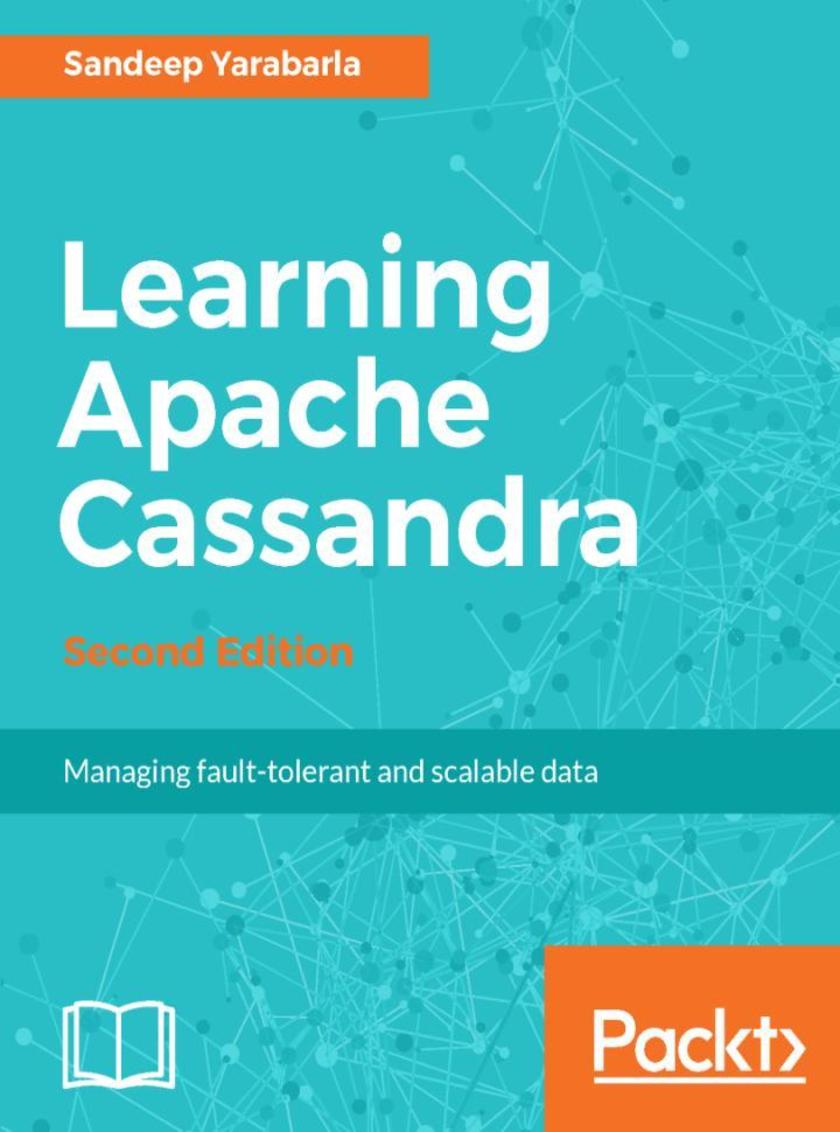
Learning Apache Cassandra - Second Edition
¥80.65
Cassandra is a distributed database that stands out thanks to its robust feature set and intuitive interface, while providing high availability and scalability of a distributed data store. This book will introduce you to the rich feature set offered by Cassandra, and empower you to create and manage a highly scalable, performant and fault-tolerant database layer. The book starts by explaining the new features implemented in Cassandra 3.x and get you set up with Cassandra. Then you'll walk through data modeling in Cassandra and the rich feature set available to design a flexible schema. Next you'll learn to create tables with composite partition keys, collections and user-defined types and get to know different methods to avoid denormalization of data. You will then proceed to create user-defined functions and aggregates in Cassandra. Then, you will set up a multi node cluster and see how the dynamics of Cassandra change with it. Finally, you will implement some application-level optimizations using a Java client. By the end of this book, you'll be fully equipped to build powerful, scalable Cassandra database layers for your applications. What you will learn ?Install Cassandra ?Create keyspaces and tables with multiple clustering columns to organize related data ?Use secondary indexes and materialized views to avoid denormalization of data
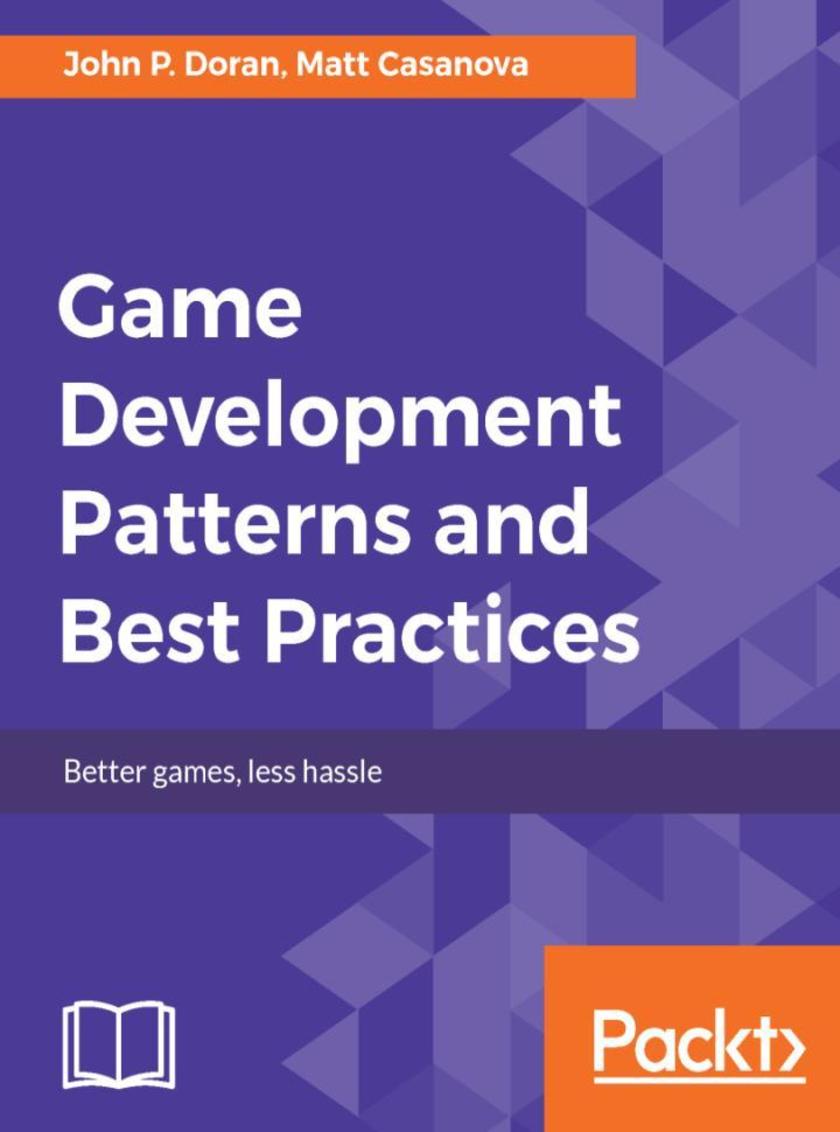
Game Development Patterns and Best Practices
¥80.65
Utilize proven solutions to solve common problems in game development About This Book ?Untangle your game development workflow, make cleaner code, and create structurally solid games ?Implement key programming patterns that will enable you to make efficient AI and remove duplication ?Optimize your game using memory management techniques Who This Book Is For If you are a game developer who wants to solve commonly-encountered issues or have some way to communicate to other developers in a standardized format, then this book is for you. Knowledge of basic game programming principles and C++ programming is assumed. What You Will Learn ?Learn what design patterns are and why you would want to use them ?Reduce the maintenance burden with well-tested, cleaner code ?Employ the singleton pattern effectively to reduce your compiler workload ?Use the factory pattern to help you create different objects with the same creation logic and reduce coding time ?Improve game performance with Object Pools ?Allow game play to interact with physics or graphics in an abstract way ?Refractor your code to remove common code smells In Detail You've learned how to program, and you've probably created some simple games at some point, but now you want to build larger projects and find out how to resolve your problems. So instead of a coder, you might now want to think like a game developer or software engineer. To organize your code well, you need certain tools to do so, and that's what this book is all about. You will learn techniques to
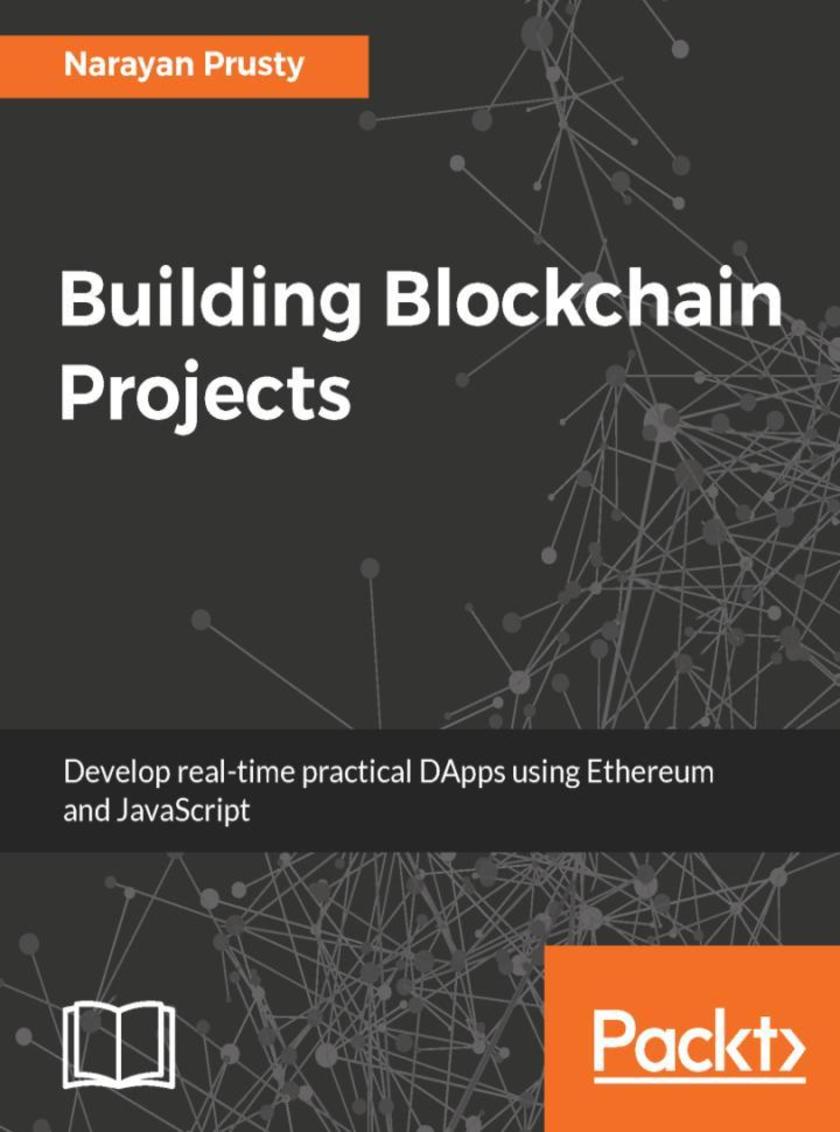
Building Blockchain Projects
¥80.65
Key Features ?Create powerful, end-to-end applications for Blockchain using Ethereum ?Write your first program using the Solidity programming language ?Change the way you think and design your applications by using the all new database-Blockchain Book De*ion Blockchain is a decentralized ledger that maintains a continuously growing list of data records that are secured from tampering and revision. Every user is allowed to connect to the network, send new transactions to it, verify transactions, and create new blocks, making it permission-less. This book will teach you what Blockchain is, how it maintains data integrity, and how to create real-world Blockchain projects using Ethereum. With interesting real-world projects, you will learn how to write smart contracts which run exactly as programmed without any chance of fraud, censorship, or third-party interference, and build end-to-end applications for Blockchain. You will learn about concepts such as cryptography in cryptocurrencies, ether security, mining , smart contracts, solidity, and more. You will also learn about web sockets, various API services for Ethereum, and much more. The blockchain is the main technical innovation of bitcoin, where it serves as the public ledger for bitcoin transactions. What you will learn ?Walk through the basics of the Blockchain technology ?Implement Blockchain's technology and its features, and see what can be achieved using them ?Build DApps using Solidity and Web3.js ?Understand the geth command and cryptography ?Create Ethereum wallets ?Explore consortium blockchain




 购物车
购物车 个人中心
个人中心



